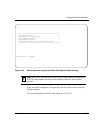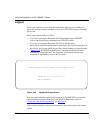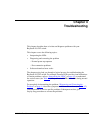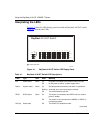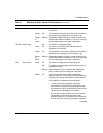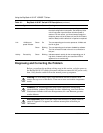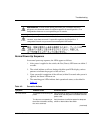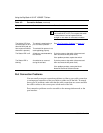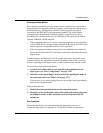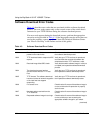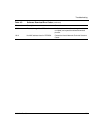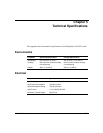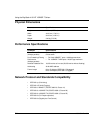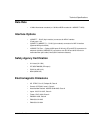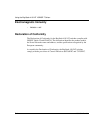
Troubleshooting
309985-A Rev 00
4-7
Autonegotiation Modes
Port connection problems can occur when a port is connected to a station that is
not operating in a compatible mode (for example, connecting a full-duplex port to
a half-duplex port). The BayStack 410-24T switch negotiates port speeds
according to the IEEE 802.3u autonegotiating standard. The switch adjusts
(autonegotiates) the port speed and duplex mode to match the best service
provided by the connected station, up to 100 Mb/s in full-duplex mode with an
optional 100BASE-T MDA installed.
• If the connected station uses a form of autonegotiation that is not compatible
with the IEEE 802.3u autonegotiating standard, the BayStack 410-24T switch
cannot negotiate a compatible mode for correct operation.
• If the autonegotiation feature is not present or not enabled at the connected
station, the BayStack 410-24T switch may not be able to determine the correct
duplex mode.
In both situations, the BayStack 410-24T switch “autosenses” the speed of the
connected station and, by default, reverts to half-duplex mode. If the connected
station is operating in full-duplex mode, it cannot communicate with the switch.
To correct this mode mismatch problem:
1.
Use the Port Configuration screen to disable autonegotiation for the
suspect port (see “Port Configuration” on page 3-36).
2.
Manually set the Speed/Duplex field to match the speed/duplex mode of
the connected station (see Table 3-14 on page 3-37).
You may have to try several settings before you find the correct speed/duplex
mode of the connected station.
If the problem persists:
1.
Disable the autonegotiation feature at the connected station.
2.
Manually set the speed/duplex mode of the connected station to the same
speed/duplex mode you have manually set for the BayStack 410-24T
switch port.
Port Interface
Ensure that the devices are connected using the appropriate crossover or
straight-through cable (see Appendix D, “Connectors and Pin Assignments”).



